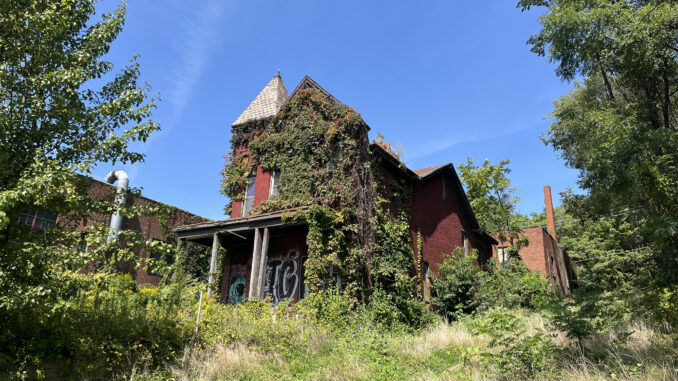
by Ember Duke | layout editor
Duquesne’s campus feels relatively safe, compared to other universities.
We’ve separated ourselves from the chaos that happens in the rest of the city atop a steep hill overlooking the Monongahela. Stepping down from campus can feel like an abrupt reality check that, yes, we are still in a major city. Living in a city comes with things that aren’t so pleasing to think about, like poverty or blocks of forgotten rotting infrastructure.
Duquesne has been a giant in Uptown’s landscape since the university’s inception. Crafted with red brick and concrete atop The Bluff, the university has expanded its reach onto Forbes and Fifth avenues, amongst other local institutions like UPMC Mercy, PPG Paints Arena, beloved food like Milano’s Pizza and a litany of privately owned housing and businesses.
For many, Uptown is just a place the bus has to go through to get to ‘more important neighborhoods’. It is Downtown’s overlooked younger sibling, pinned as dangerous and unforgiving.
Until the 1960s, Uptown was a pretty bustling area, according to Uptown Partners of Pittsburgh, a non-profit whose mission is to improve community life in the area. There are still reminders of Uptown’s livelihood on each street. Murals paint the sides of row houses, sculptures stand proud and the architecture begs to tell a story: For example, the historical and now abandoned Tito Mecca-Zizza house on Fifth Avenue, which served as one of the largest bootlegging operations in Pennsylvania.
In the 21st century, the area has fallen to the wayside as city funding and private business have focused on developing other areas. In recent years, Duquesne and other corporate residences have begun expanding in the neighborhood.
As this development continues, it’s crucial to remain actively conscious of how this affects the people, art and commerce of Uptown.
Pittsburgh’s geography is still very much affected by redlining, the practice of withholding resources and denying financial support to areas due to their racial and ethnic populations, according to a study by Devin Rutton of Students Using Data for Social Good. One of the most affected neighborhoods in Pittsburgh is the Hill District, which is geographically and culturally adjacent to Uptown.
As development expands into Uptown, it’s important that the residents who are already there are not pushed out.
New development is not a harmful omen to the area. In fact, in many ways, it’s what Uptown has been craving for decades. However, history often repeats itself, and with the rise in living costs and the lack of rise in minimum wage, it’s also possible that new development could displace locals.
Infrastructure in the city needs revitalizing. One of Pittsburgh’s major issues are blighted properties — buildings that are deemed potentially dangerous because of their deteriorated state. In early August, a building at 1520 Marion St., just blocks from campus, partially collapsed.
The Allegheny County Department of Economic Development is currently in the process of its fourth round of funding for blight removal. It is yet undetermined what areas this funding will go to.
Uptown needs to be restored. It’s nice to walk a block or two off campus and feel safe, like our surroundings are approachable. If city planners and developers put time and resources into rebuilding and repairing Uptown, we could have one less sketchy drive-through neighborhood. The problem lies in that neighborhood revitalization often looks like expensive food and luxury apartment complexes, things that raise the cost of living. This can make it difficult for the existing community to continue functioning there.
In the midst of new reform, making sure that the existing community isn’t pushed out and honoring the history of Uptown could help guide it into the future. This may look like reforming the number of abandoned plots into nice, accessible and affordable housing for the current population. This largely depends on the intentions of private landowners, but can be encouraged by a general change in mindset towards the area.
Last school year, my close friends lived in Uptown. I spent a lot of time there. It’s generally a quiet neighborhood, with an impressive amount of street art that subtly draws you in the longer you look for it. The understated landscape doesn’t boast itself, rather it stands its ground, unwavering in the face of nearby corporatization and it’s a truly unique part of the larger artistic scenery of Pittsburgh. We should not avert our attention from this, but question how it can fold into inevitable future development of the area.

